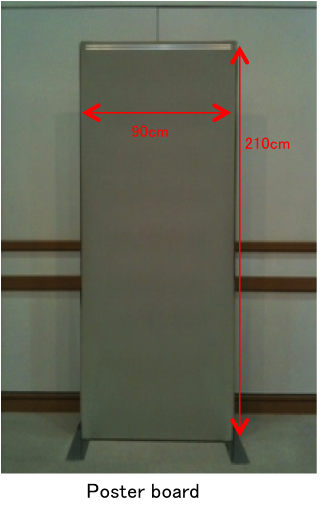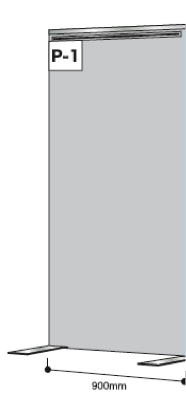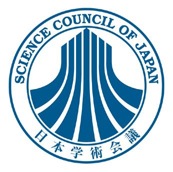AUTHOR PRESENTATION GUIDELINES
PREPARATION OF PRESENTATIONS
Poster style and lecture style presentations are two equally important and valuable methods for presenting papers at IEEE ICC 2011.
POSTER STYLE PRESENTATIONS
- General
- The poster sessions will be 90 minutes long.
- The Author(s) are expected to:
- Be set up prior to the session.
- Be present at their poster for the entire session.
- Sign-in to register that you presented your poster.
- Explain their paper to the collected audience.
- Answer questions and interact as appropriate.
- Remove their materials promptly.
- Be set up prior to the session.
- The poster sessions will be 90 minutes long.
- Setup
- Poster boards are set up in the Plaza in front of Event Hall, a poster information table is next to the poster boards.
- The locations are assigned, check at the poster desk for directions to your assigned site.
- Poster setup can begin 30miniutes before the scheduled presentation.
- Poster setup should be complete 10 minutes before the scheduled presentation.
- Poster boards are set up in the Plaza in front of Event Hall, a poster information table is next to the poster boards.
- Materials
- All poster materials should be provided by the Author(s).
- The poster board surfaces measure W90 cm × H210 cm. Recommended area: 90 cm wide and 130 cm high. A0 size (84 × 119 cm, or 33 × 47 inches) is fitted. A poster number card (W20 cm × H15 cm) is displayed at the top left of the board.
- A supply of pushpins will be available in the poster area for mounting your poster.
- Please try your material layout before you arrive and make sure it fits in the assigned space.


Image - All poster materials should be provided by the Author(s).
- Removal
- All poster materials should be removed within 10 minutes of the end of the scheduled session.
- Suggestions for a good poster presentation
- The title of the poster session should be displayed in large font, 36 - 60 point, to help the audience find your paper.
- Your main point or conclusion should be in large font if it is not covered in the title.
A font below 20 point is difficult for the audience to read. Try not to include any smaller print on your presentation.
- Avoid large sections of text in all capitals; it can be difficult to read. Use capitals and/or BOLD to emphasize your points.
- Display the highlights of your presentation in larger font, 24 - 40. Use color to emphasize the important points.
- Pictures, charts and graphs are very effective when kept simple. Too much detail will obscure the main points. Use color!
- Information flow is most effective if it is from left to right and top to bottom.
Your posted materials should be as self explanatory as possible. Attract the audience's attention and then answer detailed questions.
- Consider that the viewers will be two to three meters away from your material and adjust the print font, charts, graphs, and figures accordingly. The audience will not have the time or the space to read pages of text.
- The audience at poster sessions moves! They may want to visit several posters during the session. If you are planning to give a presentation of your material it will probably have to be repeated several times as the audience changes. Keep it short, hit the high points and invite questions.
- Some visitors may be very interested in your topic and will want to monopolize your session time with questions. This may turn away other visitors that are also interested. Recognize this as a factor and be prepared to acknowledge all visitors.
- If you want to interact with certain audience members later, have cards with your contact information available.
- The complete paper is available in the Conference Proceedings that all attendees will have. Refer the audience to the paper for detailed information.
- The title of the poster session should be displayed in large font, 36 - 60 point, to help the audience find your paper.
- General
- Each lecture style session room will be set with an LCD projector, a microphone and a laser pointer. Please bring your own laptop. Speaker rehearsal room with LCD projector will be available for presenters who wish to rehearse their presentations. (Check on-site program for exact location).
- Each lecture style presentation is allocated 18 minutes. You should spend about 15 minutes for presentation of the background, the problem, the innovative approach, the new results and the comparative evaluation. An additional 3 minutes should be available for discussion with the attendees.
- Sign the register to show that you presented your paper.
- The presenter should prepare a reasonable number of illustrations - transparencies or a Power Point file, so as not to exceed the 15 minute time. Typically, one (1) illustration is presented in one to two minutes. Additional illustrations could be prepared to support possible answers to attendees' questions.
- Each illustration should not be crowded by text and graphics. Too much text should be avoided: illustrations should support the presentation; they should not be simply read by the presenter. Graphics help in communications, are more understandable, and point out the basic ideas. Use large fonts so they can be read without a major effort; typically 20-24 point fonts should be used.
- Presentation should be clearly structured. Begin with a title page. The index of the presentation
should outline the presentation. The basic problem should be clearly stated, as well as the application
area. Background and previous work should be summarized to provide a prospective for the results
presented in the paper. The innovative approach should be clearly stated. The application of the
approach to the application problem should be described, by pointing out the main features and
characteristics, the problems and the solutions. The results should be clearly outlined and evaluated.
Appropriate comparison with previous results should be presented. Conclusions should summarize
the work performed and point out the main innovation and results. Future work and developments
could also be sketched.
- Each lecture style session room will be set with an LCD projector, a microphone and a laser pointer. Please bring your own laptop. Speaker rehearsal room with LCD projector will be available for presenters who wish to rehearse their presentations. (Check on-site program for exact location).
Important IEEE Policy Announcement:
The IEEE reserves the right to exclude a paper from distribution after the conference (e.g., removal from IEEE Xplore) if the paper is not presented at the conference.
Papers are reviewed on the basis that they do not contain plagiarized material and have not been submitted to any other conference at the same time (double submission). These matters are taken very seriously and the IEEE Communications society will take action against any author who has engaged in either practice. IEEE Web Page on
Plagiarism: http://www.ieee.org/web/publications/rights/Plagiarism_Guidelines_Intro.html. IEEE Web Page on Double Submission: http://www.ieee.org/web/publications/rights/Multi_Sub_Guidelines_Intro.html
PLEASE NOTE: To be published in the IEEE ICC 2011 Conference Proceedings and IEEE Xplore®, an author of an accepted paper is required to register for the conference at the FULL or LIMITED (member or non-member) rate and must present the paper at the conference. Non-refundable registration fees must be paid prior to uploading the final IEEE formatted, publication-ready version of the paper. For authors with multiple accepted papers, one full registration is valid for up to 3 papers. Accepted papers will be published in the IEEE ICC 2011 Conference Proceedings. Accepted and presented papers will be published in the IEEE ICC 2011 Conference Proceedings and in IEEE Xplore®.






